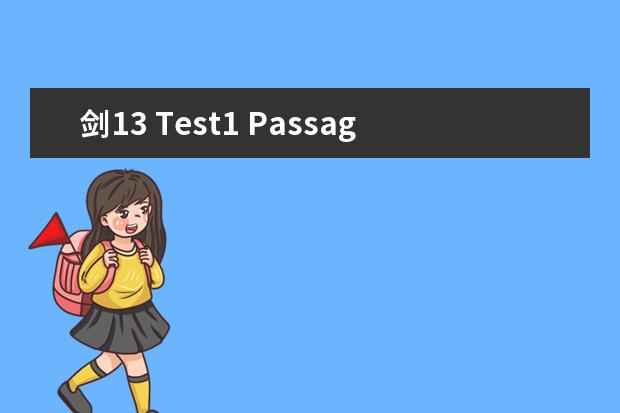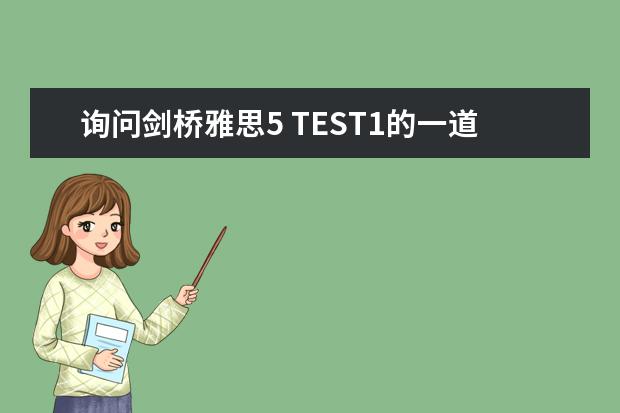Artificial artists
人工智能艺术家
The Painting Fool is one of a growing number of computer programs which, so their makers claim, possess creative talents. Classical music by an artificial composer has had audiences enraptured, and even tricked them into believing a human was behind the score. Artworks painted by a robot have sold for thousands of dollars and been hung in prestigious galleries. And software has been built which creates art that could not have been imagined by the programmer.
傻瓜绘图和不断增多的电脑程序一样,是有着创作才能的–至少它们的开发者如是说。一个智能作曲家所谱曲的古典音乐曾让听众们极度痴迷,以至于坚信这些乐谱是人类所作。一台机器人作画的艺术作品被*到上千美元,也曾被挂进名声斐然的艺术馆。而某些软件创作出的艺术品也曾让开发它的程序员们感到意外。
Human beings are the only species to perform sophisticated creative acts regularly. If we can break this process down into computer code, where does that leave human creativity? ‘This is a question at the very core of humanity,’ says Geraint Wiggins, a computational creativity researcher at Gold*iths, University of London. ‘It scares a lot of people. They are worried that it is taking something special away from what it means to be human.’
人类是唯一一个会经常创作复杂艺术作品的生物。假设我们把这个创作过程解构成电脑代码,那人类的创作性又将如何自处?“事关人性最为核心的本质。”伦敦大学戈德史密斯学院电脑创作研究人员Geraint Wiggins说。“这可吓坏了许多人。他们担心这将会使独属于人的某种特质从人性中分除。”
To some extent, we are all familiar with computerised art. The question is: where does the work of the artist stop and the creativity of the computer begin? Consider one of the oldest machine artists, Aaron, a robot that has had paintings exhibited in London’s Tate Modern and the San Francisco Museum of Modern Art. Aaron can pick up a paintbrush and paint on canvas on its own. Impressive perhaps, but it is still little more than a tool to realise the programmer’s own creative ideas.
从某种程度上来说,我们对于电脑艺术并不陌生。问题是,人类艺术和电脑创造力的分界线在哪里呢?想一想最早的机器艺术家Aaron,它的作品曾在伦敦泰特现代艺术馆和旧金山现代艺术博物馆展出过。它可以拿起笔刷,自己在画布上作画。可能令人刮目相看,但它依然不过是一台实现了程序员的创作理念的工具罢了。
Simon Colton, the designer of the Painting Fool, is keen to make sure his creation doesn’t attract the same critici*. Unlike earlier ‘artists’ such as Aaron, the Painting Fool only needs minimal direction and can come up with its own concepts by going online for material. The software runs its own web searches and trawls through social media sites. It is now beginning to display a kind of imagination too, creating pictures from scratch. One of its original works is a series of fuzzy landscapes, depicting trees and sky. While some might say they have a mechanical look, Colton argues that such reactions arise from people’s double standards towards software-produced and human-produced art. After all, he says, consider that the Painting Fool painted the landscapes without referring to a photo. ‘If a child painted a new scene from its head, you’d say it has a certain level of imagination,’ he points out. The same should be true of a machine.’ Software bugs can also lead to unexpected results. Some of the Painting Fool’s paintings of a chair came out in black and white, thanks to a technical glitch. This gives the work an eerie, ghostlike quality. Human artists like the renowned Ellsworth Kelly are lauded for limiting their colour palette – so why should computers be any different?
傻瓜绘图软件的设计者Simon colton急于确保自己的创造不会遭受相同的批判。与以往的“艺术家”如Aaron所不同的是,傻瓜绘图软件只需要极少的指令,它能够通过从网上搜寻材料来确定自己的绘图概念。这个软件配有独立的网络搜索,巨细无遗地搜寻所有社交媒体站点。它现在也开始展现某种想象力,能够从头创作一幅画。它的原创作品中,有一系列模糊的风景画,描绘着树木和天空。有人可能会说看上去很呆板、机械,但Colton却觉得这样反应了来自于人们评判电脑作品和人类作品时的双重标准。他说,无论如何,想想看傻瓜绘图在画这幅风景的时候,可没有参照过任何照片。“如果一个孩子用他脑海里的画面画了幅画,你就会说他有一定的想象力”,他指出。“同样的标准应当也适用于机器。”软件错误有时也能带来一些意想不到的效果。傻瓜绘图有一系列椅子的画,画出来只有黑白两色的,多拜技术故障所赐。这使得这些作品有一种怪异而鬼魅的特质。人类艺术家如声名显赫的Ellsworth Kelly经常被褒扬用色克制—那为什么到了电脑这里就不行呢?
Researchers like Colton don’t believe it is right to measure machine creativity directly to that of humans who ‘have had millennia to develop our skills’. Others, though, are fascinated by the prospect that a computer might create something as original and subtle as our best artists. So far, only one has come close. Composer David Cope invented a program called Experiments in Musical Intelligence, or EMI. Not only did EMI create compositions in Cope’s style, but also that of the most revered classical composers, including Bach, Chopin and Mozart. Audiences were moved to tears, and EMI even fooled classical music experts into thinking they were hearing genuine Bach. Not everyone was impressed. however, Some, such as Wiggins, have blasted Cope’s work as pseudoscience, and condemned him for his deliberately vague explanation of how the software worked. Meanwhile, Douglas Hofstadter of Indiana University said EMI created replicas which still rely completely on the original artist’s creative impulses. When audiences found out the truth they were often outraged with Cope, and one music lover even tried to punch him. Amid such controversy, Cope destroyed EMI’s vital databases.
像Colton这样的研究者并不认为我们应当直接用人类艺术的标准来衡量机器创作,毕竟人类“有着数千年的时光来发展艺术造诣”,虽然有些人着迷于电脑将来可能创作出新颖而又精妙的作品,正如人类最好的艺术家一样。到目前为止,只有一台机器几乎做到了。作曲家David Cope写出了一个叫音乐智能实验(EMI)的程序。它不仅仅能仿作Cope的曲风,连最负盛名的古典音乐大师如巴赫、肖邦、莫扎特的曲风也能模仿。听众们听着它的作品感动泪流,连古典音乐专家都没能发觉所听曲目并不是真正的巴赫作品。当然,也不是所有人都*账。有些人比如Wiggins也曾攻击过他的作品是伪科学,并谴责他刻意隐瞒自己软件的运作方式。同时,印第安纳大学的Douglas Hofstadter说EMI的模仿完全有赖于原作者的创作灵感。而当听众们发现真相时,他们通常会对Cope恼羞成怒,有个音乐爱好者甚至要冲上去揍Cope。在这样的争议中,Cope销毁了EMI的关键数据。
But why did so many people love the music, yet recoil when they discovered how it was composed? A study by computer scientist David Moffat of Glasgow Caledonian University provides a clue. He asked both expert musicians and non-experts to assess six compositions. The participants weren’t told beforehand whether the tunes were composed by humans or computers, but were asked to guess, and then rate how much they liked each one. People who thought the composer was a computer tended to dislike the piece more than those who believed it was human. This was true even among the experts, who might have been expected to be more objective in their *yses.
但是为什么人们明明喜欢那些音乐,却又在发现它们的创作方式后感到厌恶呢?格拉斯哥卡里多尼亚大学的电脑科学家David Moffat所做的一个实验为我们提供了一些线索。实验中他请专业的音乐家和非专业人士来评判6部音乐作品。参与者事先都不知道所听曲目是人类创作还是电脑产物,但他们会被要求去揣测,然后给这些作品按喜爱程度评级。如果人们认为某个曲目是电脑产物,他们的喜爱程度就会低于人类创作的曲目。甚至在专家当中也是如此,我们可能本来会指望他们在分析评价时能够更客观一些。
Where does this prejudice come from? Paul Bloom of Yale University has a suggestion: he reckons part of the pleasure we get from art stems from the creative process behind the work. This can give it an ‘irresistible essence’, says Bloom. Meanwhile, experiments by Justin Kruger of New York University have shown that people’s enjoyment of an artwork increases if they think more time and effort was needed to create it. Similarly, Colton thinks that when people experience art, they wonder what the artist might have been thinking or what the artist is trying to tell them. It seems obvious, therefore, that with computers producing art, this speculation is cut short – there’s nothing to explore. But as technology becomes increasingly complex, finding those greater depths in computer art could become possible. This is precisely why Colton asks the Painting Fool to tap into online social networks for its inspiration: hopefully this way it will choose themes that will already be meaningful to us.
这种偏见从何而来?耶鲁大学的保罗·布鲁姆提出了一个建议:他认为我们从艺术中获得的快乐部分来自作品背后的创作过程。Bloom说,这可以给人一种“不可抗拒的本质”。同时,纽约大学的贾斯汀·克鲁格(Justin Kruger)的实验表明,如果人们认为需要更多的时间和精力来创作一件作品,那么他们对一件作品的欣赏就会增加。同样,科尔顿认为,当人们体验艺术时,他们想知道艺术家可能一直在想什么,或者艺术家试图告诉他们什么。因此,显而易见的是,随着计算机生产艺术,这种猜测被打断了——没有什么可探索的。但是随着技术变得越来越复杂,在计算机艺术中找到更大的深度是可能的。这正是科尔顿要求绘画傻瓜利用在线社交网络寻求灵感的原因:希望通过这种方式,它将选择对我们来说已经有意义的主题。



 雅思写作范文:Value of Artists 艺术家的社会价值
雅思写作范文:Value of Artists 艺术家的社会价值
 询问剑桥雅思5 TEST1的一道阅读题(剑桥雅思4 test1 阅读passage3 答案问题)
询问剑桥雅思5 TEST1的一道阅读题(剑桥雅思4 test1 阅读passage3 答案问题)
 剑桥雅思4 test1 阅读passage3 答案问题 剑桥雅思4阅读:Adults and children are frequently...这篇答案 帮忙
剑桥雅思4 test1 阅读passage3 答案问题 剑桥雅思4阅读:Adults and children are frequently...这篇答案 帮忙
 雅思阅读A类-Sample 19:Creating Artificial Reefs
雅思阅读A类-Sample 19:Creating Artificial Reefs
 雅思写作实例讲解-“AI人工智能”怎么写?
雅思写作实例讲解-“AI人工智能”怎么写?
 前考官雅思写作大作文范文汇总:人工智能的影响
前考官雅思写作大作文范文汇总:人工智能的影响
 山东大学国际班留学费用 山东大学人工智能国际班怎么样
山东大学国际班留学费用 山东大学人工智能国际班怎么样
 雅思口语人工智能写作技巧 美国斯坦福大学计算机专业留学介绍
雅思口语人工智能写作技巧 美国斯坦福大学计算机专业留学介绍
 人工智能出国留学申请 出国留学选择什么专业比较好?
人工智能出国留学申请 出国留学选择什么专业比较好?
 人工智能出国留学怎么申请 2022年申请多伦多大学怎么样详细介绍-出国留学网 - ...
人工智能出国留学怎么申请 2022年申请多伦多大学怎么样详细介绍-出国留学网 - ...
 怎么做好一篇雅思阅读的填空题
怎么做好一篇雅思阅读的填空题  雅思阅读考试答题顺序
雅思阅读考试答题顺序  雅思阅读考试提升技巧!
雅思阅读考试提升技巧!  雅思阅读考试文章的原文一般是出自哪里?
雅思阅读考试文章的原文一般是出自哪里?  雅思阅读7分可以错几道题?
雅思阅读7分可以错几道题?  雅思阅读怎样得满分(雅思阅读上7分的技巧)...
雅思阅读怎样得满分(雅思阅读上7分的技巧)...
 【申请季】代尔夫特理工TU Delft最新...
【申请季】代尔夫特理工TU Delft最新...
 雅思8大类阅读真题合集,高清PDF可打印!...
雅思8大类阅读真题合集,高清PDF可打印!...
 雅思写作阅读技巧 雅思阅读考试各个题型的解...
雅思写作阅读技巧 雅思阅读考试各个题型的解...
 雅思阅读黄金技巧26条目录(雅思阅读时间分...
雅思阅读黄金技巧26条目录(雅思阅读时间分...